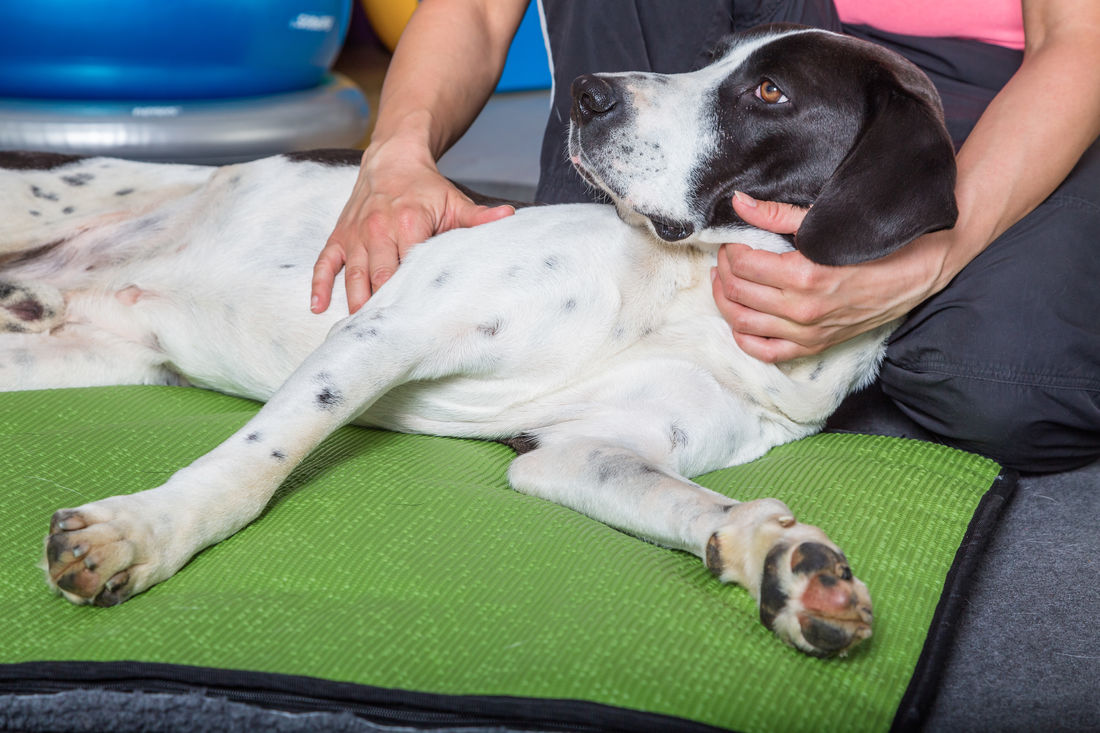All animals, including dogs, can suffer from musculoskeletal problems and these problems can cause your pet significant pain, and impair mobility if left untreated. Chiropractic treatment is designed to assist with a long list of musculoskeletal problems.
Let’s take a look at how chiropractic treatment can help your pet dog.
What Does Chiropractic Treatment on Animals Involve?
Chiropractic treatment on humans and animals is based around an understanding of the direct relationship between the spine and the nervous system. At Aligning Canine Chiropractic our focus is on using gentle joint manipulation and mobilization techniques combined with soft tissue massage to relax your dog’s muscles and improve their joint mobility. Many dogs actually enjoy the treatment process (who doesn’t love a massage?)
What are the Benefits?
Canine chiropractic treatment is designed to help with a range of problems from lameness to osteoarthritis to muscle tightness. Treatment aims to benefit your dog in a number of different ways.
- The ideal outcome after treatment is a noticeable improvement in mobility/agility and or flexibility. The outcome will depend of course on the severity of the problem and on how well your dog responds to treatment. Your dog may require several sessions before you observe an improvement.
- With human chiropractic treatment the goal is to restore overall musculoskeletal function, meaning the person moves better and therefore actually reduces their risk of injury when engaging in sports. We apply this same injury-reduction theory to your dog with the aim being to reduce the number of injuries they experience.
- Depending on the nature of your dog’s problem when presenting for treatment, they may also experience an increase in mood and playfulness as a result of a reduction in their discomfort and or/pain.
When Should I Take My Dog to a Chiropractor?
Like many other animals, dogs often put on a display of stoicism when hurt or in pain. This behaviour has an evolutionary basis (you’re more likely to get attacked if you look weak!) however it can make it hard to identify when your pet is struggling. For this reason, it’s sometimes easiest to tell if your dog is in pain by watching them when they run and play. If you notice your dog is not moving as well as they normally do, this could be a sign of a musculoskeletal problem.
If you regularly enrol your dog in athletic competitions, (which can put extra strain on muscles and joints) you may well want to book an appointment with a canine chiropractor as a standard preventative care measure.
If Your Dog is a Susceptible Breed…
Some breeds of dog are more prone to musculoskeletal ailments than others. Large breeds of dog like Great Danes, Newfoundlands and Saint Bernards all have a higher risk of experiencing musculoskeletal problems than smaller breeds. Common ailments include osteoarthritis, shoulder degeneration and knee dysplasia. Smaller breeds however are not immune – take the Dachshund - which has been selectively bred to have an elongated spine – this breed experiences a very high rate of back-related problems, most notably paralysis of the hind legs.
At Aligning Canine Chiropractic we are committed to offering you and your pet the best treatment possible. Contact us today for more information or to make an appointment.

